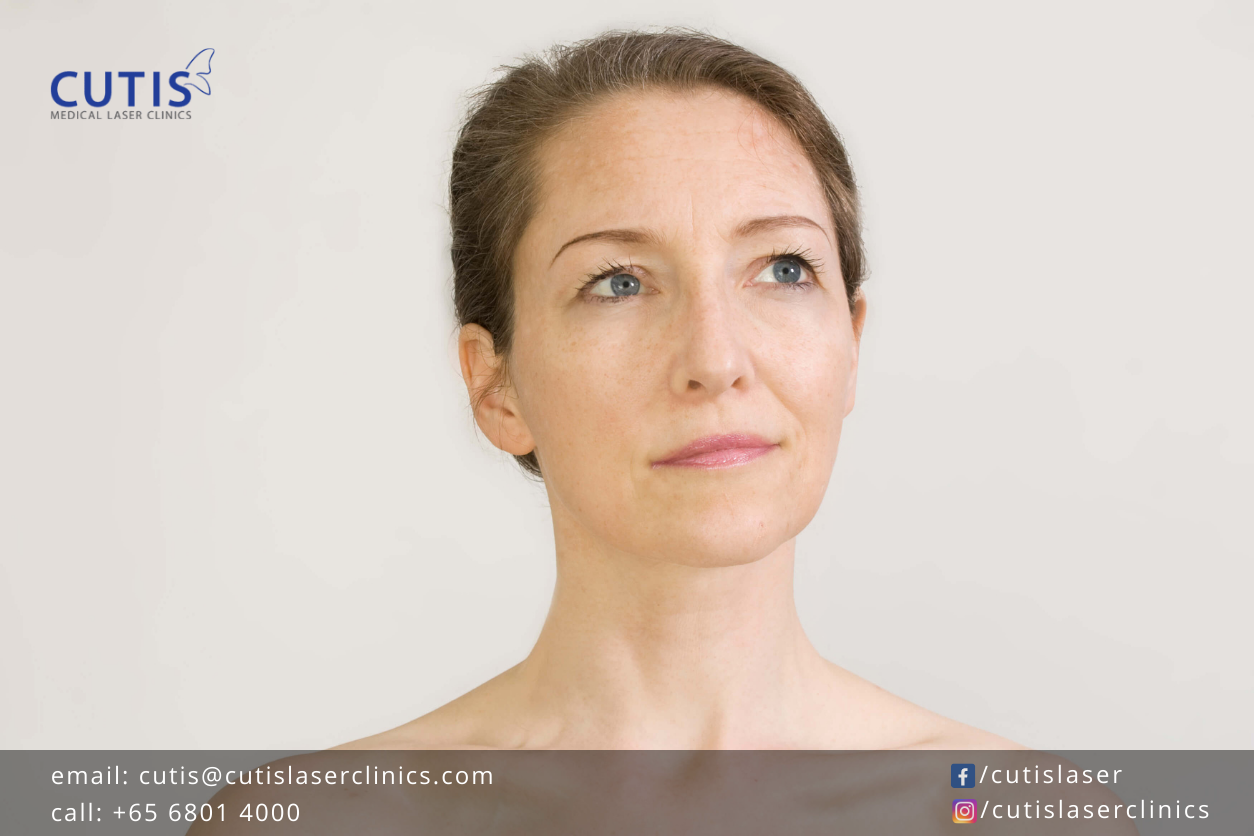While melasma is a form of hyperpigmentation, it is different from other types of skin discoloration. Characterized by gray and brown patches of skin, melasma is believed to be triggered not just by sun exposure, but mainly by hormonal fluctuations. It is also referred to as the “mask of pregnancy” because pregnant women are more likely to have it.

What does melasma look like?
As previously mentioned melasma appears as light or dark brown, or blue-gray patches on your skin. These patches are flat and may look a bit like freckle spots. Melasma commonly occurs on the forehead, bridge of the nose, cheeks, chin, and above the upper lip.
This type of pigmentation, however, can occur on any part of the skin commonly exposed to the sun, like the neck and forearms. This is also why it is common for those with melasma to have aggravated symptoms during the summer. These dark patches do not pose any health problems, but they can make people feel self-conscious.
Does pregnancy cause melasma?
Changes in hormone levels, especially estrogen and progesterone, are common during pregnancy. These are known to contribute to the appearance of melasma. Hormonal changes within the body, however, can trigger this skin condition. This is why melasma is more prevalent in women than men, whether they’re pregnant or not.
Apart from hormone changes or pregnancy, other factors can trigger or cause melasma:
- UV exposure – Overexposure to the sun can cause or worsen different types of pigmentation, including melasma.
- Genetics – Although not entirely hereditary, there is some genetic link to melasma. It tends to run in families and is more common among people with a family history of melasma.
- Certain medications – This is particularly true for birth control pills or hormone replacement medication, which can cause fluctuations in hormone levels.
Does melasma go away on its own?
If pregnancy is the cause of your melasma, it may resolve or get better on its own. You can see improvements in your skin after pregnancy or after you finish breastfeeding. There are, however, instances where people can have melasma for years or even their entire lives.
One frustrating thing about melasma is that it can be stubborn to treat or fade. If it doesn’t go away on its own, it is recommended to see a skin or aesthetic doctor and treat your skin with more care. There are treatments that can reduce its appearance, so it is best to ask your doctor what is right for you.
What about oral supplements?
Some oral supplements like Diamond Tomato Rx may be used to treat or improve melasma appearance. This dietary supplement is developed by Cutis and can help maintain glowing and healthy skin from within. Diamond Tomato Rx is formulated with Phytofloral and tranexamic acid, which are both found safe and effective in treating melasma and brown spots.
- Phytofloral – a natural antioxidant from non-chemical processed tomatoes. This protects the skin from environmental damage that causes age spots and pigmentation.
- Tranexamic acid – made from an amino acid (protein) called lysine. In safe and lower concentrations, it was discovered in clinical studies to reduce melasma significantly.
Take note: In clinical studies, results were seen within 8 to 12 weeks, but they may still vary. Also, Diamond Tomato Rx is only available with a prescription.
What other treatments can help?
Apart from oral supplements, there are other melasma treatments. These can include topical medications, skin lighteners, and aesthetic procedures.
- Hydroquinone – This is applied to the skin and works by lightening your complexion. Hydroquinone comes in different strengths and forms (gels, creams, and lotions) and is available by prescription.
- Tretinoin and corticosteroids – Certain medications may contain tretinoin and corticosteroid. These may help improve and speed up the effects of hydroquinone.
- Aesthetic treatments – At Cutis Medical Laser Clinics in Singapore, we have the VI Peel Precision Plus, which is the chemical peel for melasma and other types of skin discoloration. We also have the Limelight Photo Facial, which is an intense pulsed light (IPL) treatment that targets pigmentation and can be customized for different skin tones.
Skincare practices
Here are a few skincare tips that can help reduce the appearance of your melasma and help you achieve a more even skin tone.
- Apply sunscreen every day – Protect your skin from the harmful effects of UV rays by wearing a broad-spectrum sunscreen daily, whether it’s sunny or cloudy. Be sure to reapply the product frequently when swimming or sweating profusely.
- Wear protective clothing and accessorize – When you’re out in the sun, get extra protection through a shade or an umbrella. You can also consider wearing protective clothing, a brimmed hat, and sunglasses.
- Don’t wax – Doing so may only trigger inflammation that can aggravate your melasma. If you’re looking to remove unwanted hair in areas with this skin condition, ask a doctor for other hair removal options.
- Stick with gentle products – Avoid skincare products with harsh chemicals or those that burn or sting. These can cause irritation and inflammation that may make your melasma worse.
Looking for safe and effective melasma or pigmentation treatment? Contact Cutis Medical Laser Clinics in Singapore today and schedule a consultation with our Harvard-trained aesthetic doctor, Dr. Sylvia Ramirez.
- If you would like to be an informed patient, please contact us at +65-6801-4000 or
hello@cutislaserclinics.com. - Cutis Medical Laser Clinics, 9 Scotts Road Pacific Plaza, Scotts Medical Center #08-07, Singapore – 228210
+65-6801-4000 - hello@cutislaserclinics.com
